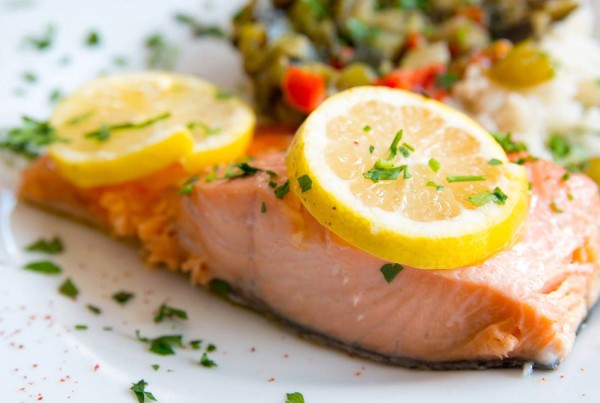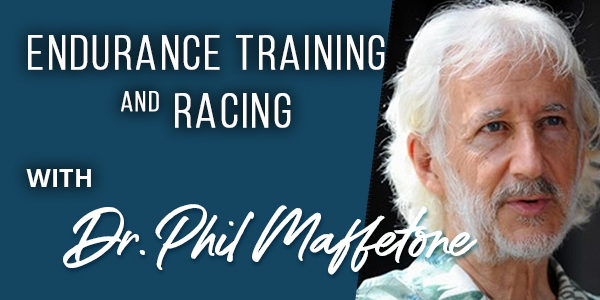
Do your 2020 goals include getting lean and achieving better human performance? Don’t just do fat-burning, do it right! Dabbling won’t work, so let’s get serious.
’Tis the season. Most complaints these days are about body fat, low energy, hunger, and exercise performance. Don’t cheat yourself — fix them all at once!
If you’re in it for the long run, it’s the aerobic system that’s a key to better human performance on all levels. From immunity, circulation and brain function to aging and athletic accomplishment, this success comes in great part through our metabolic ability for long-term fat-burning. But without the discipline to ramp up metabolism, it just won’t work.
Get used to the scientific notion and practical application of fat-burning for energy — it’s now here to stay. This means better running, biking, walking and everything else, including reducing excess body fat and weight.
Here are five ways fat-burning accomplishes this, improving all aspects of both fitness and health. Each of these aspects builds on the others by improving metabolism for more muscle energy, and conserving glycogen stores to avoid bonking (during the day, while working out, or during competition). So doing one or two, or three or four, may not be effective. The leanest among us can walk, bike or run hundreds of miles fueled by existing fat stores. Tapping into this energy source leads to better endurance, more speed, improved muscle balance to avoid injuries, getting healthier, and more.
Use coffee wisely. One of the benefits of coffee is caffeine’s effect on physical performance. Simply, it increases fat-burning to fuel muscles and conserve glycogen (sugar) stores (tea works too). If you missed my recent article on this topic, go here.
The caveat: of course, if you add sugar or eat sweets with coffee, fat-burning can be diminished.
Avoid pre-exercise carbs. Turning on your fat-burning metabolism is a must to improve aerobic function, but turning if off can happen by eating refined carbohydrates, especially sugar, prior to a workout. This causes the calories we burn during a workout to be more sugar calories than fat calories. In fact, a pre-exercise meal containing fat with few carbs may further stimulate fat-burning by boosting metabolism. For very long workouts or races of 2, 3 or more hours, carbohydrates during activity can be helpful.
The caveat: Eating refined carbs before workouts will result in less fat calories burned.
Warm up well. An active warm-up period provides a key 12- to 15-minute window for the body to switch gears from rest to activity. Warm-up does not mean stretching. Instead, it is a period of very low intensity activity in which you allow the heart rate to slowly rise to your MAF HR. Some key benefits to a proper warm-up include:
- Fat-burning increases.
- Flexibility improves.
- Blood is circulated throughout the aerobic muscles.
- Breathing/lung function improves.
The caveat: Without a proper warmup, the above fat-burning benefits may not be realized.
The exercise calories myth…which calories? We generate energy from both sugar and fat, and those who burn more fat are not only more fit, performing better, but are healthier too. This is especially important during exercise. Aerobic muscle energy comes from fat, and even at high intensities it allows us to go farther and faster. Training around your personal Fatmax HR zone is a key. While laboratory testing can guide you to an optimal fat-burning training HR (which also corresponds to the aerobic threshold and the first ventilator threshold), these are evaluations most people won’t obtain. Instead, the MAF HR also corresponds to Fatmax. Use the MAF 180 Formula to determine your particular training HR. Whether building, or rebuilding, a great aerobic base could take three to six months, depending on your starting point. Once you’ve accomplish this base (i.e., can run, bike or otherwise perform faster a the same HR.) you can add high-intensity training to your routine (where you’ll still burn fat along with sugar).
The caveat: Aerobic development means strict training at your MAF HR for the base-building period — higher intensities on hills, or working out with friends, etc., could impair progress.
Food intake influences metabolism much more than exercise. Food is a primary determinant of which fuels will be used more during aerobic exercise — fat or sugar. First, eliminate junk food, which will quickly improve fat-burning, then determine if you have other limits on natural carbohydrates — the Two Week Test or Two Week Keto Test will guide you.
The caveat: as a recent study showed, cheating with just one dose of carbs after clean eating can damage blood vessels in young healthy men. During the Two-Week Test, it takes two weeks to evaluate yourself: mess up halfway through it and you need to start over.
Follow the fat studies
Understanding why the body works is a powerful incentive to do it right. Many of us seem comforted by study results, in part because the brain plays a role in everything. Most studies never reach the public through the media, and the ones that do are often distorted. Below are some important fat-burning studies with a common theme:
- The human body has the ability to use fats for energy not only at low to moderate intensities, but at high intensities too — such as during a 5km running road race.
- Low-carbohydrate, high-fat eating is an effective approach to increased performance.
- Training the aerobic, slow-twitch muscles through lower-intensity workouts helps promote the body’s fat-burning mechanism.
By training your body to burn more fat through diet and aerobic exercise, you will not only improve your overall health, you also will develop increased endurance and speed.
Note: While this article should be helpful for many people, it’s even more important to personalize it to meet your particular needs. That’s what MAF is all about. If you’re not sure where to start, go here. For those who want more information about getting faster on fat, here are some additional sources of information below.
- A low-carbohydrate ketogenic diet combined with 6-weeks of Crossfit training significantly decreases body fat and weight, maintains muscles and improves performance. (https://clinmedjournals.org/articles/ijsem/intrnational-journal-of-sports-and-exercise-medicine-ijsem-3-054.php?jid=ijsem.)
- Easier training and low-carbohydrate eating restore health and improve performance in an Ironman triathlete: a case study.
- Easy exercise at Fatmax levels (~41-46% of VO2max) in 60-69-year old men and women significantly decreased body fat, improved blood glucose, increased VO2max, and physical performance, including strength. (Yan Jiang, et al. Aerobic exercise training at maximal fat oxidation intensity improves body composition, glycemic control, and physical capacity in older people with type 2 diabetes. J Exerc Sci Fit. 2020 Jan; 18(1): 7–13. doi: 10.1016/j.jesf.2019.08.003.)
- After switching to a low-carbohydrate high-fat diet, there was no significant difference in a 5km time trial performance in runners, although the low-carb runners displayed a trend of improved performance. (Prins PJ, et al. High Rates of Fat Oxidation Induced by a Low-Carbohydrate, High-Fat Diet, Do Not Impair 5-km Running Performance in Competitive Recreational Athletes. J Sp Sci Med. 2019; 18: 738-750.)
- Two separate groups of runners following MAF training performed faster 5km race paces than the median 5km race times in the U.S.
- The MAF 180 Formula
- The MAF Test
- The Two-Week Test
- Seven signs of fat-burning








